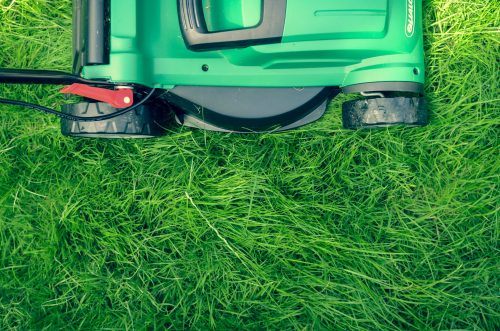I hope you are all keeping well during this strange time of lockdown against the corona virus. It seems everyone wants to tackle their gardens at the moment, and in the UK it’s been perfect weather to get out there to do that. A favourite project is improving the lawn, and here’s a post to help you do that.
This contribution is by Laurence Bennet, who has a useful website on which he evaluates garden equipment and writes about everything to do with your lawn. See http://lawnmowerlarry.co.uk/
5 Steps to Successful Organic Lawn Care
Have you considered that the greenest part of your home — your lawn — may be the least green of all?
More and more people around the country are doing their part to live an eco-friendly lifestyle, but keeping a lawn looking lush, green and healthy can involve loads of synthetic fertilizers and chemical herbicides.
These harmful products may make your lawn look great, but they destroy the environment by degrading the soil. The chemicals pollute water they leak into and are a health hazard to humans, pets and wildlife.
Creating a beautiful and organic lawn is easy and rewarding. It also saves money in the long term.
Autumn is the best time to start, but spring is the second best time — simply follow these 5 easy steps:
1 – Mow Correctly
Mow the lawn only when it is dry to prevent fungal spores or other diseases from spreading across the garden.
Lift up your mower a little, to a height of around 3.5” — The higher length helps to create shade, slows the growth of weeds, prevent dry patches and keep your lawn looking green.
Have your mower checked by your service provider to ensure that the blades are sharp and clean. Blunt blades make your grass look uneven and create clumps that can block drainage.
Choose an eco-friendly mower. The most ‘organic’ lawn mowers are manual push mowers.
– They don’t use fuel and cannot cause pollution by accidental spillage.
– You are not releasing and breathing in toxic fumes.
– You get a free workout in the fresh air!
2 – Aeration
Test how easy it is to poke a screwdriver into the ground. If it is difficult, you probably have soil that is compacted. This occurs when your soil is high in clay, filled with weeds or has many bare spots. Loosening up the earth with an aerator is vital for a successful organic lawn. Rent an aerator and run it over your lawn. Or if you are feeling fit, aerate your lawn with a garden fork!
 You can avoid bare patches like these; taken by Akabashi
You can avoid bare patches like these; taken by Akabashi
The spikes create holes that aid water drainage. Eco-friendly worms and microflora flourish as they have fresh oxygen. Aerated soil allows grass roots to grow deeply, creating a vigorous lawn. Very soon, birds will be pecking for food and aerating your lawn for you!
3 – Fertilise organically with mulching
Fertilising is essential for a healthy lawn and the best way to do it is organically. Most chemical fertilizers contain Nitrogen, but grass clippings contain 50% of the Nitrogen you need. Leave them on the lawn and they will naturally fertilize your grass.
4 – Overseed
Overseeding is throwing grass seeds over an existing lawn to make it fuller and thicker. First, aerate your lawn. This allows the seeds to make contact with the soil for germination. Mow your lawn and then sprinkle the seeds evenly. You can use a rotary spreader or throw them by hand. Rake the lawn lightly to allow the seeds to settle. Finally, give your lawn a good watering.
5 – Learn about your lawn
 © Andy Murray on Flickr.
© Andy Murray on Flickr.
Understanding your garden is fun and rewarding. Buy a home kit and test your soil. The pH level should be between 6.5 and 7.0. Discover which weeds are growing. Not all weeds are bad – Clover, for example, takes free nitrogen from the air and distributes it to the grass.
Once you have a successful organic lawn, you will find that it costs very little to maintain. And you can enjoy it, knowing that you have done your part to save Mother Earth!
Top photo © Daniel Watson on Unsplash.
